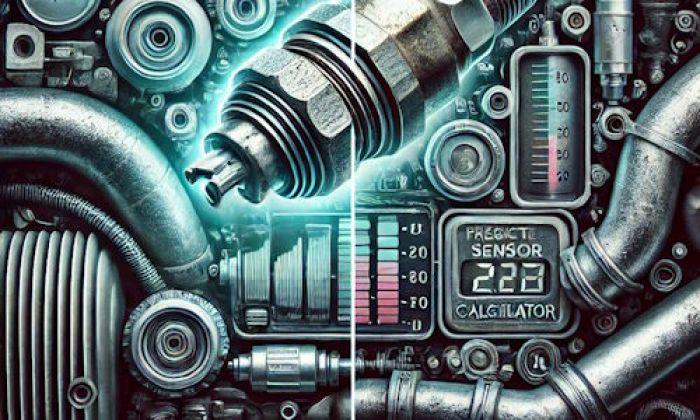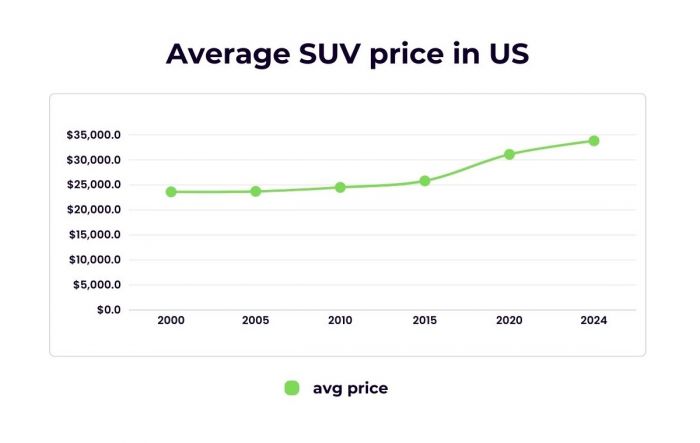The 7.3L Power Stroke is one of the most successful engines of Ford. However, it is not without its share of issues. As it takes a toll from various factors such as regular wear and tear, poor maintenance habits, exposure to elements, and bad driving habits, it can be prone to certain problems that you should watch out for.
Key features and my opinion about the engine
- Production years:1994-2003
- Average lifespan of 7.3 Power Stroke:380,000-450,000 miles
- Fuel supply type:direct injection
- Power range:250-275 hp
- Fuel efficiency:bad
- Engine block material:cast iron
- Engine reliability score:high
- The most common problems:electronics problems, wiring issues, pretty bad fuel economy.

How the IPR Valve Works in the 7.3L Engine
The IPR valve is an essential component of the 7.3L engine, which plays a fundamental role in controlling fuel injection pressure and timing. The valve adjusts the high-pressure oil that actuates the injectors to determine precise fuel delivery to each cylinder at any given time. It does this by using a plunger to monitor and adjust the high-pressure oil that is sent from the oil pump.
The IPR valve essentially takes over after the HPOP (High-Pressure Oil Pump) has done its job of priming the injectors, allowing for greater fuel injection accuracy and control.
One of the most important benefits of an IPR valve in the 7.3L engine is increased fuel economy, as it helps to ensure that the right amount of fuel is being delivered to each cylinder at any given time. It also helps to prevent injection knock by controlling the fuel pressure and timing more accurately, which in turn results in greater engine performance.
Additionally, an IPR valve can help reduce engine noise and vibration by ensuring that the injectors are being fired at exactly the right time. Moreover, it helps to reduce emissions by allowing for more complete combustion of the fuel mixture and providing better fuel atomization.
Finally, an IPR valve can help prevent damage to other engine components due to too much pressure or incorrect timing.
5 Most Common Problems in the IPR Valve of the 7.3L Engine
The 7.3L Power Stroke engine is such a complex machine with so many moving parts and other components that affect its operation in a vehicle. Normally, the signs of IPR valve issues can also mimic other potential engine problems, but if you suspect that the problem is indeed coming from the component, here are some tips that can aid your diagnosis:
1. Contamination in the Pilot Valve
One of the most common issues faced with the 7.3L engine's IPR valve is contamination in the pilot valve. Contamination can lead to several problems, such as reduced power output and increased fuel consumption, by preventing proper pressure regulation in the fuel system. To diagnose this issue, it is important to understand the symptoms.
The most common symptom of contamination in the pilot valve is a decrease in engine power output. This can be seen as hesitation during acceleration, slower than normal speed on highways, or other instances when additional power is needed from the engine.
Poor fuel economy may also occur due to improper pressure regulation, resulting in more fuel being delivered than is needed. In addition, the engine may make an odd noise or vibration when operating under load.
To solve this issue, it is important to identify and clean any contamination in the pilot valve. This can be done using a simple solvent solution and a soft brush. If there's any damage to the valve though, it may need to be replaced completely.
2. Debris Stuck in the Actuator Piston
The common causes of debris getting stuck in the actuator piston of the IPR valve in the 7.3L engine can be attributed to clogged filters, worn valves, or a failing high-pressure oil pump. If any of these are suspected, it is important to investigate further and take appropriate action as soon as possible.
Clogged filters can be caused by excessive dirt, dust, and debris buildup in the engine or other components that are connected to the IPR valve. To resolve this issue, the filter must be removed and replaced with a clean one.
Worn valves can lead to an obstruction of oil flow in the actuator piston, resulting in a decrease in pressure. In such cases, the valves must be inspected and replaced if necessary.
In addition, a failing high-pressure oil pump may also contribute to debris buildup in the actuator piston. If this is suspected, then the pump should be tested for any problems and repaired or replaced if needed.
Regardless of the source, any foreign object stuck in the actuator piston area of the IPR must be cleared. It should be disassembled for a more thorough cleaning of the actuator body, piston, pin, and guide. However, if such has already resulted in damage to the actuator piston, the part must be replaced. In the event that the IPR valve has been compromised, its assembly must be changed with a new one.
3. O-Ring Damage
The o-ring seal of the IPR valve can become damaged due to various causes over time. The common symptoms of this damage are similar to the other problems mentioned. These generally include low fuel pressure, slow response from the throttle, rough running at idle or when revving the engine, and misfiring.
The main causes of o-ring damage include faulty installation, incorrect seal size, and improper cleaning during maintenance. An air compressor that is too powerful may also cause damage to the seal if it has been pressurized for a long period of time.
To address these issues, it is important to inspect the o-ring for any signs of damage, ensure that the correct size and type of seal is used, and thoroughly clean the component during maintenance. Additionally, if using an air compressor, it must be set at the correct pressure before use to avoid causing further damage.
It is worth noting that even after taking all of these steps, the seal may still become worn over time due to regular wear and tear. If this happens, it is important to replace the o-ring as soon as possible to restore the proper functioning of the IPR valve. Failure to do so could lead to further damage and decreased performance from the engine.
4. IPR Screen Damage
In many cases, the cause of IPR screen damage can be traced back to dirty fuel injectors, clogged fuel filters, or both. A blocked fuel filter will reduce the flow of fuel to the injectors and affect their performance.
Then, a dirty injection system leads to poor combustion which results in lower power output and poorer overall engine performance. In addition to causing direct physical damage to the IPR screen, these issues can also cause the valve to become inefficient or even stuck in the open/closed position.
To address IPR screen damage, it is important to inspect and clean both the fuel filter and injectors. If necessary, replace any damaged components with new parts. It is also important to check for any debris that may be trapped within the injection system and remove it accordingly.
Depending on the severity of the damage, extra repairs such as replacing worn seals may be necessary. Moreover, a fuel system service can help maintain optimal performance by restoring the proper balance between air, fuel, and pressure levels in the engine's fuel delivery system. Proper maintenance will ensure that your 7.3L engine runs smoothly for years to come
5. Malfunctioning IPR Valve Sensor
The possible causes of IPR valve sensor malfunction can range from physical damage to the IPR valve itself or associated wiring/connectors to problems with the PCM (Powertrain Control Module).
The PCM monitors inputs from various sensors to determine how much fuel needs to be injected into the cylinders and at what pressure. If a sensor is not providing the correct information to the PCM, then it may cause the IPR valve to malfunction.
If physical damage is suspected as the cause of the IPR valve sensor malfunction, it should be addressed immediately. Repairs could include replacing damaged connectors or broken wires, cleaning corroded contacts, or replacing a faulty IPR valve altogether.
In terms of PCM issues, there are several potential solutions that can be employed. The most cost-effective option is to reset the PCM and see if this rectifies the issue. If not, it might be necessary to reprogram or replace the PCM altogether with a new unit.
It's also possible that an incorrect calibration file has been loaded into the PCM, in which case, it should be loaded with the correct calibration.
If all else fails, it's possible that a faulty sensor is to blame and should be replaced accordingly.
Conclusion
If you suspect any kind of problem associated with the IPR valve or its related components, it's best to have your vehicle inspected by a qualified professional who can diagnose and repair the issue. This will ensure that the system is back up and running properly as soon as possible. In any case, keeping an eye on the symptoms listed above will help catch potential IPR valve issues before they become more serious problems.
About the authors
The CarAraC research team is composed of seasoned auto mechanics and automotive industry professionals, including individuals with advanced degrees and certifications in their field. Our team members boast prestigious credentials, reflecting their extensive knowledge and skills. These qualifications include: IMI: Institute of the Motor Industry, ASE-Certified Master Automobile Technicians; Coventry University, Graduate of MA in Automotive Journalism; Politecnico di Torino, Italy, MS Automotive Engineering; Ss. Cyril and Methodius University in Skopje, Mechanical University in Skopje; TOC Automotive College; DHA Suffa University, Department of Mechanical Engineering






Add comment